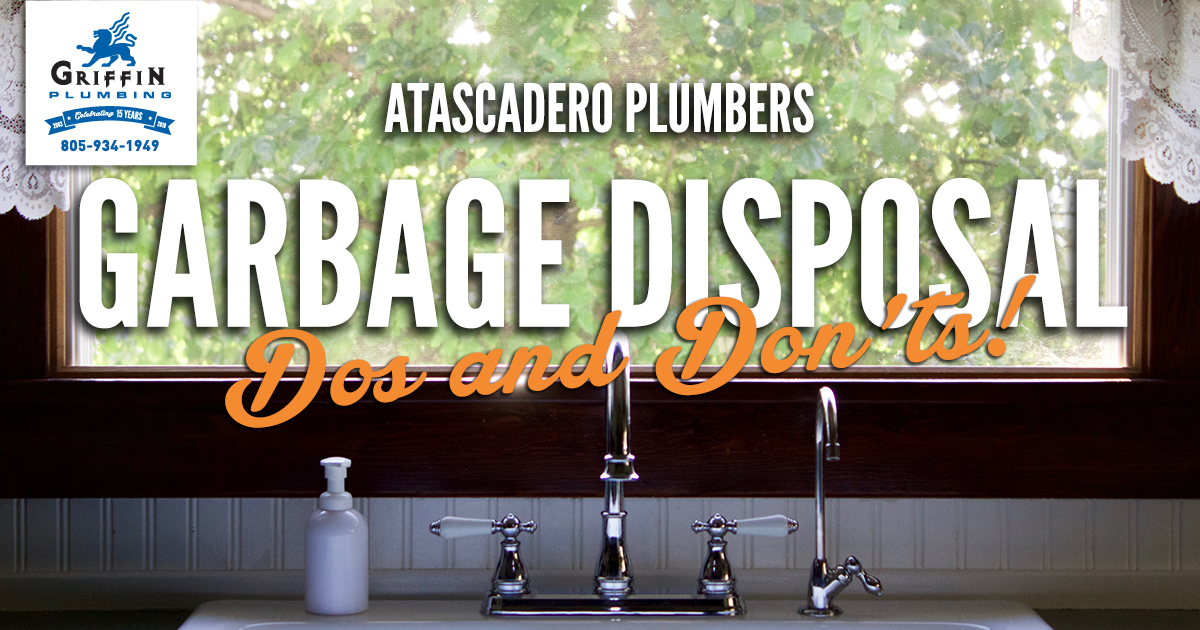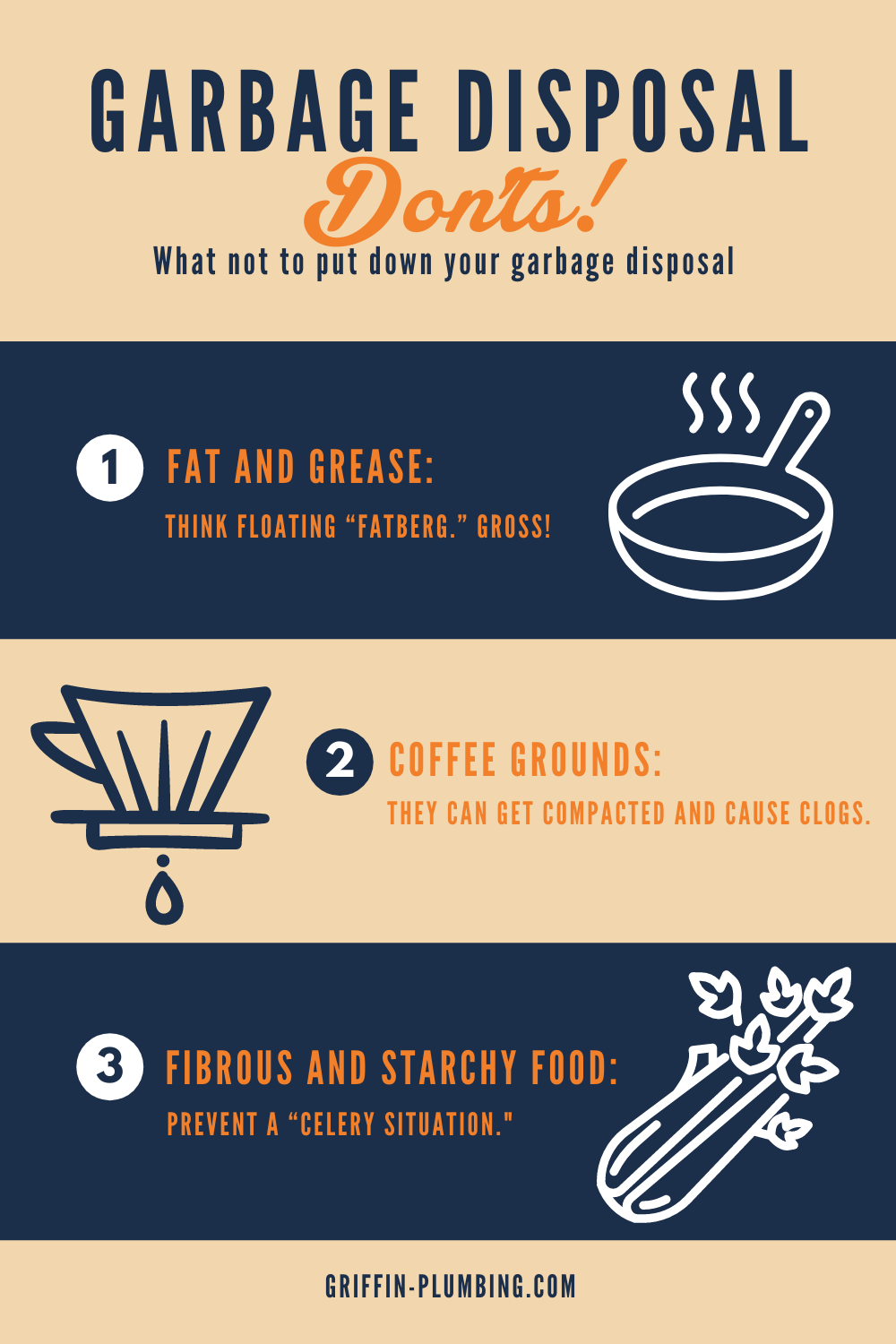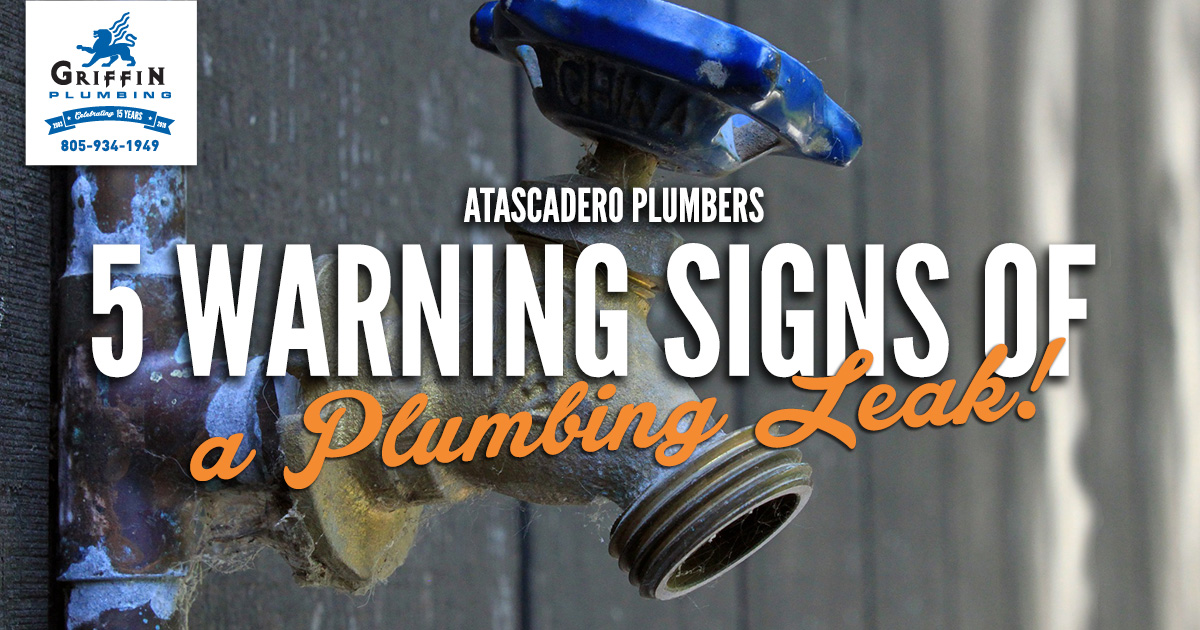It’s time to talk garbage disposals with our Atascadero plumbers. When it comes to that magic grinder in the sink, there is a lot of misconception out there about what it can actually do.
The problem is in the name. If you treat your garbage disposal as a magical receptacle for, well, garbage, then odds are you’re going to run into some problems.
So, we’ve come up with a list of garbage disposal dos and don’ts to make sure your kitchen sink and plumbing are working efficiently.
What You CAN Put in Your Garbage Disposal
First, let’s start with making sure you’re using your garbage disposal as it was intended. Garbage disposals may be marketed as an easy way to dispose of all of your kitchen waste: Just scrape your plate into the sink and forget about it. Well, that can be a recipe for disaster – if not for your plumbing then the city’s wastewater system.
Here’s what you should do: Scrape all your food waste into the garbage or – better yet – compost bin. Then, the garbage disposal can handle all the little bits left over on dishes. Think of the disposal as if it wasn’t even there and instead there was a screen over your drain.
What You Should NOT Put in Your Garbage Disposal
When it comes to rinsing waste into the garbage disposal, here are some items you should definitely avoid.
Grease and Fat: It might seem that with a little hot water your garbage disposal flushes grease down the drain easy peasy. However, when that fat cools down, it can solidify farther down the line and cause major clogs and plumbing issues.
Also, it’s an environmentally conscientious decision to keep fat out of the drain because even if it makes its way through your pipes, it can cause a big problem in your city’s sewer system. Think of a big “fatberg” floating around. Gross.
Coffee Grounds: The grounds can get caught in your shredder and pack in tight together, causing build-ups. Plus, coffee grounds are compostable and great for the garden.
Eggshells: It might seem like a delicate shell can be easily dispatched. But the egg’s membrane can get wrapped around the disposal’s rotors and cause them to jam or block the drain filters causing them to clog. These are great for the compost bin, as well.
Bones: This is an obvious one, but a lot of “heavy-duty” garbage disposals are marketed as if you can throw anything in and be fine. Even if the disposal grinds them into dust, your home’s plumbing system may not be able to handle what the disposal sends down the drain – especially in older homes.
Fibrous and Starchy Foods: We all know someone who put potato skins in the disposal – or done it ourselves – and ended up with a drain clogged with what is essentially mashed potatoes in your sink. Not good. But even vegetables like celery, asparagus, onions, and leafy greens can tangle in the rotors and clog pipes.
Pasta and rice are no-no’s, too.
Garbage Disposal Maintenance and Cleaning
A good way to prevent the temptation to wash something you shouldn’t into the disposal – just this once – is to invest in a simple drain screen. That’ll keep even the errant food scrap from getting washed down.
You should clean the disposal about once a month simply by throwing in a handful of ice cubes along with a tablespoon of salt and then turning it on while running hot water. You can also add lemon juice or vinegar into the ice cubes before freezing them for an additional disinfectant and to combat odor (you can use bleach for more persistent smells).
But if you run into a problem with your garbage disposal or need more tips and tricks from our friendly Atascadero plumbers, call Griffin at 805-934-1949 today!








